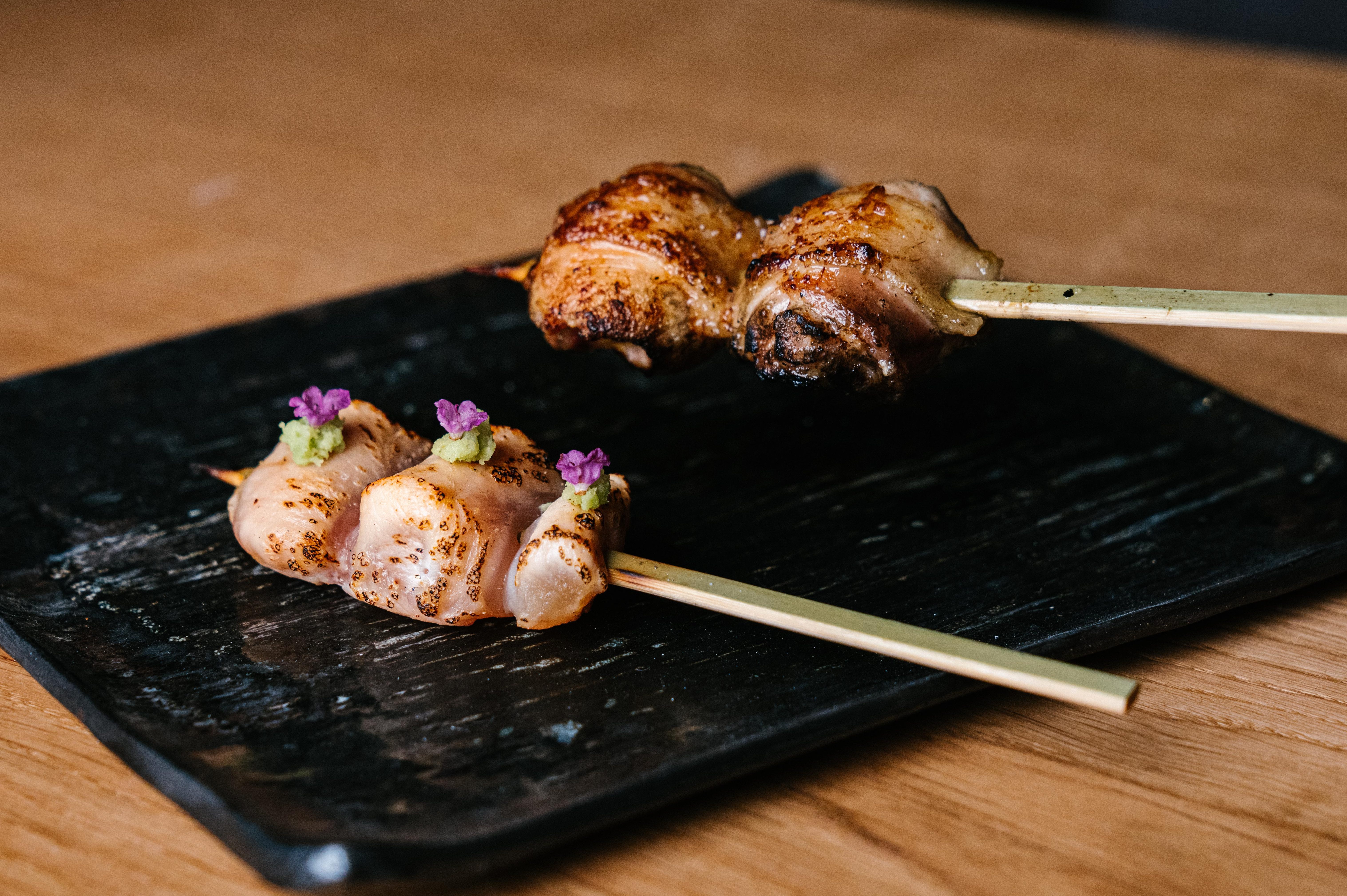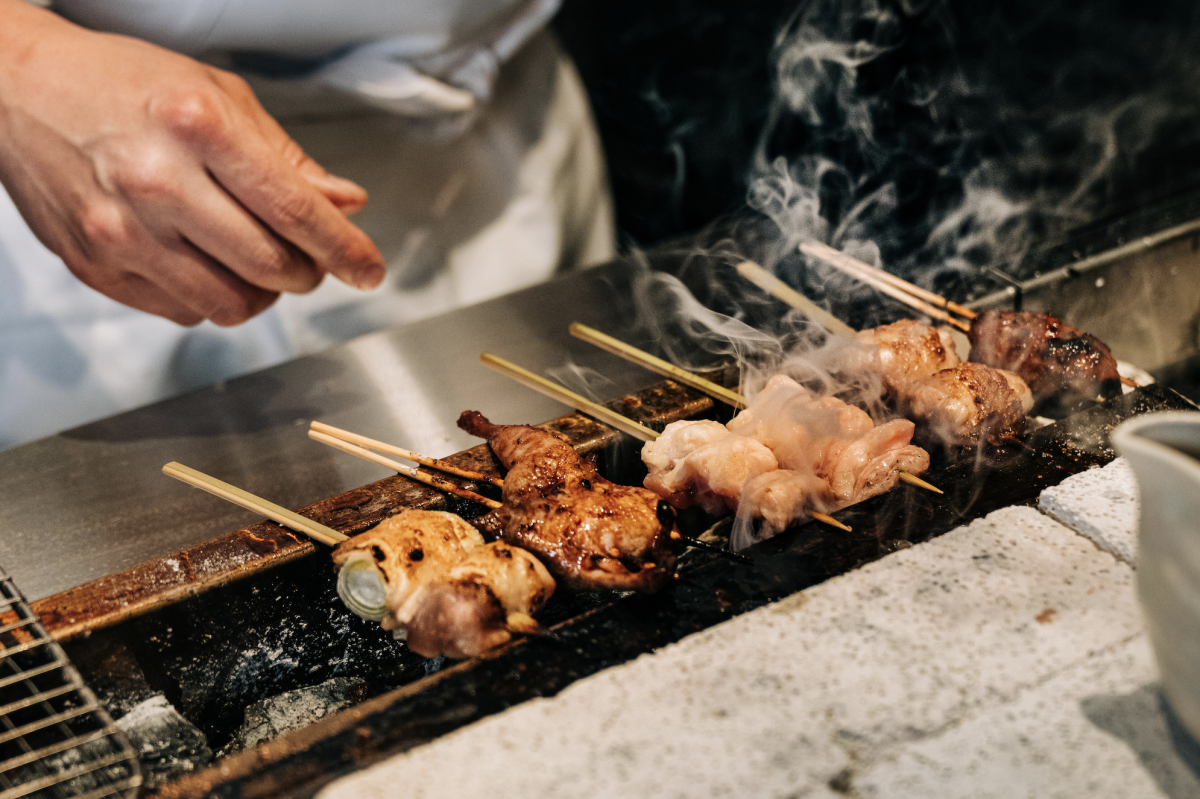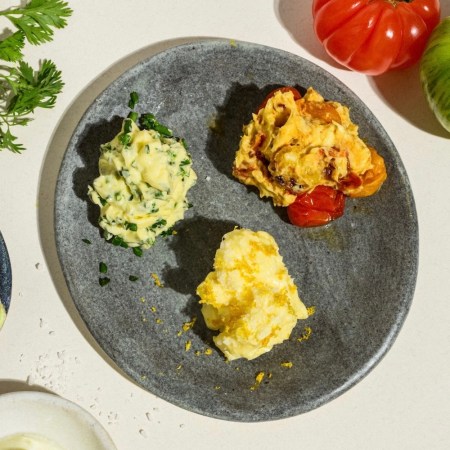Located in the Canal Arcade, a passageway connecting the Bowery to Elizabeth Street in Chinatown in New York City, Chef Atsushi “ATS” Kono’s self-titled eatery KONO just began welcoming customers to its 14-seat chef’s counter this week.
In addition to Kono himself, at the heart of the restaurant is a smoky charcoal-fueled grill that heats up to 1,650 degrees to allow the seasoned yakitori master to grill the traditional Japanese skewered chicken that KONO specializes in.
Tokyo-style in nature, Kono’s yakitori is made using high-quality organic Amish chicken sourced from Pennsylvania skewered on bamboo and grilled over authentic kishu binchotan charcoal that’s made from 100% Japanese white oak. “It’s known as the king of all charcoal,” Kono tells InsideHook. “Kishu binchotan is revered for its clean-burning properties and it is odorless, thus keeping the decadent flavors of the yakitori pure when grilling. It also has a high steady heat that seals the meat quickly and lasts over long periods of time.”
Longevity is important at KONO, as the restaurant’s kappo-style yakitori omakase dinner ($165) lasts for 16 courses and takes approximately 2.5 hours to complete. That seems like a long time to sit and enjoy grilled chicken alongside seasonal vegetables and other sides, but, as Kono explains, it’s part of delivering an authentic yakitori dining experience to his customers. And the experience will be authentic.
“I think many people are not accustomed to eating chicken parts like organs and crunchy or chewy parts like cartilage,” he says. “Many people will like these parts once they experience them, but many diners can be hesitant to try them at first. Chicken has different tastes and textures for each part. By using its different parts and preparing each part with various cooking methods, I believe I can convey all the deliciousness that chicken has to offer to our customers.”
Yakitori, which began as street food and was skewered so it could be eaten easily while walking without dirtying the hands, may sound simple and a bit boring, but it’s actually quite complex, according to Kono. “When a trained chef skewers the meat, the thickness and gaps of the meat are cooked evenly over the fire. Depending on the part, it also can be skewered in a zigzag,” he says. “This enhances the eating experience because you get varying tastes and textures based on what touches the fire and how the inside is cooked. Using bamboo skewers to transfer the heat also makes yakitori juicier. Eating yakitori only takes a moment, but it takes lots of time, effort and consideration beforehand. I love it. To have a namesake restaurant allows me to put my passion on the plate.”
With the recipe below, Kono’s passion can end up on your plate at home.

Chef Atsushi Kono’s Chicken Thigh Yakitori
Ingredients
- 3-4 chicken thighs
- 3.5 tbsp soy sauce
- 3.5 tbsp mirin
- 4 tbsp brown sugar
- 1/3 tbsp fresh ginger juice
- Bamboo skewers
Instructions
- To make the tare, bring the soy sauce, mirin, brown sugar and ginger juice to a boil in a saucepan over medium-high heat. Once ingredients are at a boil, reduce heat and simmer for approximately 5 minutes.
- Debone chicken thighs and remove skin. Reserve skin and set aside.
- Cut chicken thighs into 1-inch, bite-sized pieces. It’s very important to keep the pieces the same size.
- Cut reserved skin into 1-inch strips.
- For each piece of chicken thigh, wrap one piece of skin around and skewer together on a water-soaked bamboo skewer — there should be three pieces per skewer.
- Repeat until all meat and skin have been skewered.
- Preheat a toaster oven to 450F. Cook chicken skewers for 10 minutes.
- To finish, use a pastry brush and brush the tare sauce on each skewer.
- Put back into the toaster oven for 1-2 minutes to caramelize. Serve immediately with shichimi.
- Eat the yakitori quickly once it’s served so that you can enjoy the differences in texture and taste.
- In addition to chicken thighs, suggested yakitori alternatives include chicken tenderloin, shiitake mushrooms, cherry tomatoes, shishito peppers, asparagus, eggplant and boiled corn.
- Make sure to use bamboo skewers, as this allows heat to be slowly transferred from the inside as well as the outside.
Every Thursday, our resident experts see to it that you’re up to date on the latest from the world of drinks. Trend reports, bottle reviews, cocktail recipes and more. Sign up for THE SPILL now.



















